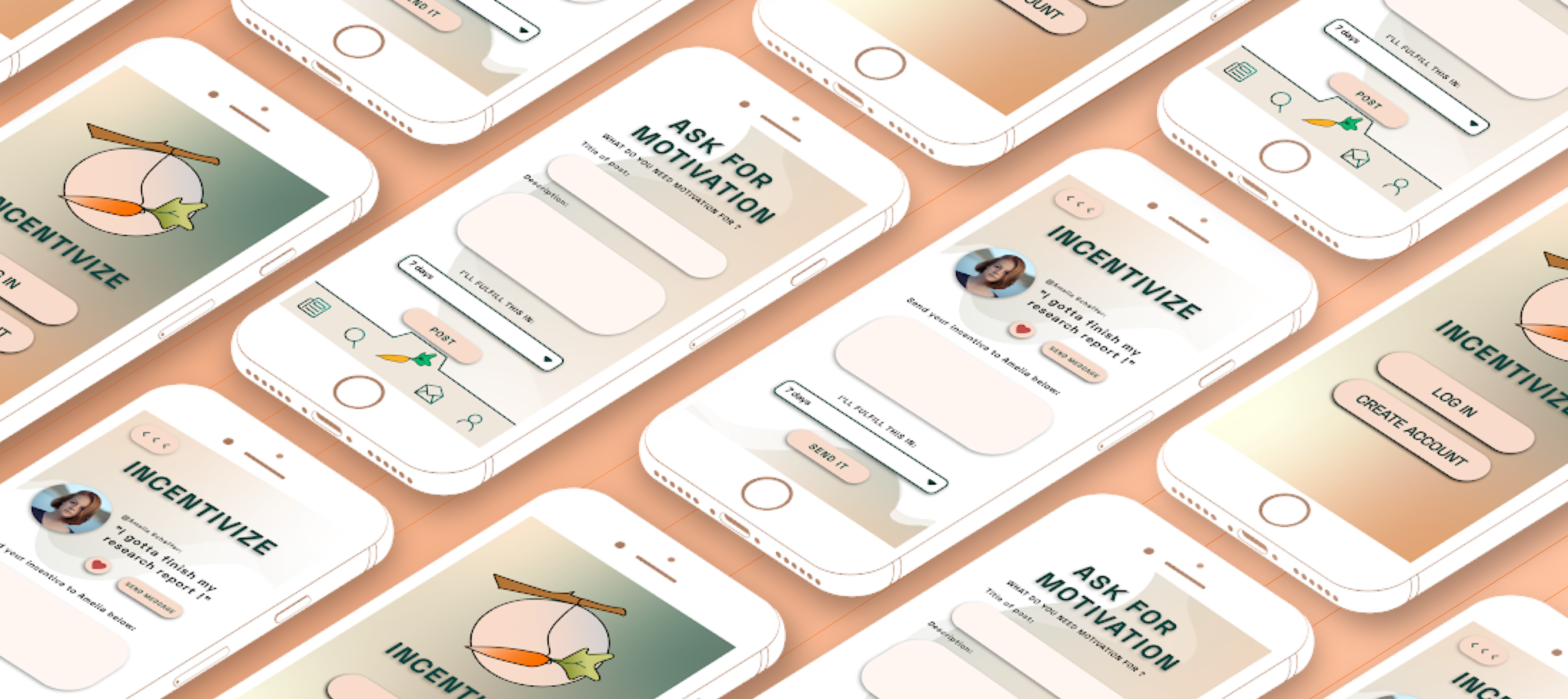

Incentivize — The motivation support network
An application for group based and community driven motivation, promoting a balance between work and play.
User Experience Designer & Researcher
Stemming from my experiences as a college level student — productivity is typically individually motivated; students are in control of the choices that are made to affect productivity outcomes. This is often an isolating experience, people who are exceptionally busy may miss out on social activities outside of school with friends and family.
We as humans crave human connection and sometimes everyday tasks get in the way. This sad reality is a problem, and Incentivize is a solution.

How might we design a solution to get people excited to do what they struggle with?
Incentivize allows for people to support others in their network with tasks, work and goals that they struggle with. The main goal of the application is to push other people to be better than they were the day before through mutually beneficial incentives.
The motivation center acts as a homepage for users to see what goals their friends have, what they're looking to accomplish and other users interactions with them. When users ask for an incentive they show up on this page chronologically.
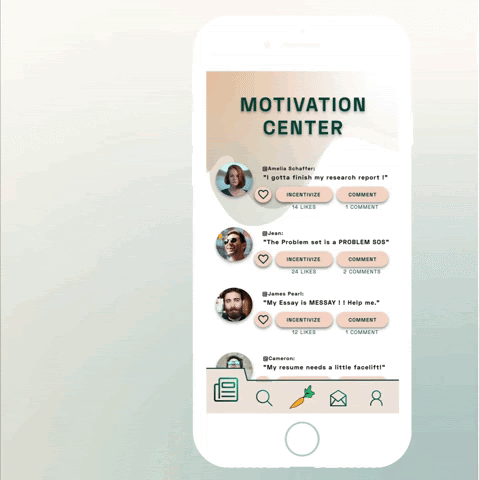
Offering friends incentives to complete their goals like a coffee date or quality time are small gestures that help motivate the asker while also giving the incentivizer an opportunity to socialize.
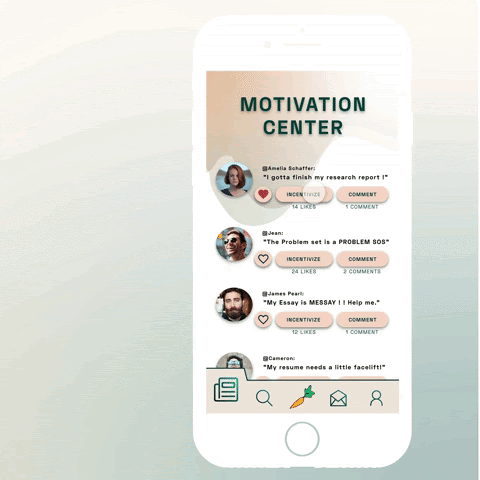
Users are able to edit their bio and profile image to make the platform more fun and personalized. The goal of Incentivize needs to foster a sense of community and kindness in order to be successful. Studies show that putting a face to a profile promotes trust and healthier interactions.

Incentivize is not a one sided application. Asking for help from peers is equally as important. The gif shows how one might ask for motivation with suggestions of incentives that they like.
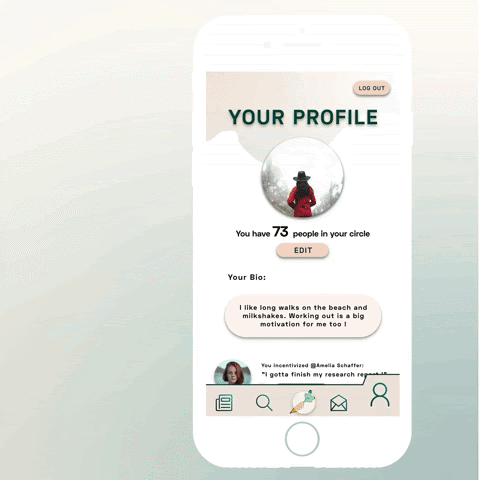
Users are able to accept incentives when their peers submit them. This is done in the format of a message because it's personal and allows for conversation if the incentive needs to be adjusted or changed.
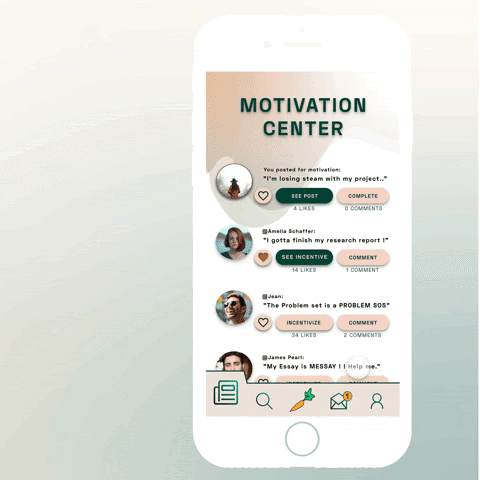

If you dangle a carrot in front of someone or offer them a carrot, you are trying to persuade them into action by offering them a reward.
I started out this project with a survey of other motivational tools on the market. I researched 4 competitors who were either direct or indirect. Some had features I was considering for my design, but others were general motivation and organizational applications. In doing this, I learned what was good and what was bad about apps that could be similar to my own.
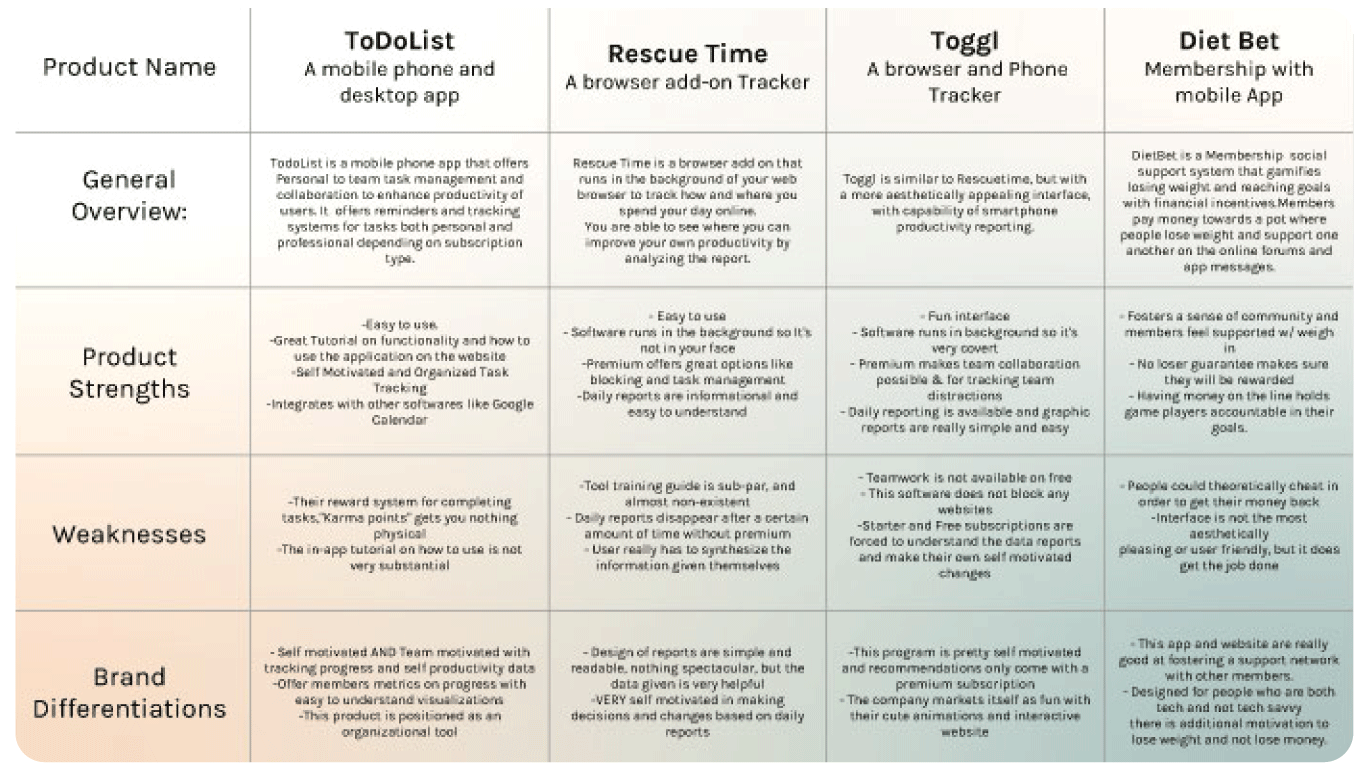
Since my design solution would ideally forge a sense of community and foster values such as compassion and understanding towards people of different experiences, I chose value sensitive design to be my main approach to this problem. Brainstorming with pen and paper allowed me the space to be as imaginative as possible when it came to potential solutions to the problem. I then chose eight unique solutions to sketch out on paper.

Personas are crucial in understanding the user base of a product and narrowing down the focus to the target audience. I defined personas for students who are looking for motivation from their peers or who are looking to motivate peers. These students are all seeking a support system who have goals similarly aligned to their own.

In order to choose which features to implement, I used the QOC (Questions, Options, Criteria) method to help me understand the pros and cons of different options and the trade-offs amongst them. I identified the critical feature of my project and defined 3 different feature approaches with design rationales. The one critical feature is the incentivize feature.
I first had to sketch out all of the interactions in my notebook and then used paper and a thick folder to create the physical prototype. The folder had a slit in the side so that I could run the paper through so the screen was able to be changed. I sketched quickly but spent my time on thinking about the interaction layout.

This flow showcases micro and larger interactions in low-fidelity. I used this fidelity prototype to test out what users thought about the interface, if the flow made sense and what could be improved upon. Users thought there was too much going on, noting the interface was "busy". I did confirm the understanding behing the carrot icon in the navigation bar as a desire to ask for an incentive.
The flows showcased below are incentivizing a friend and also editing profile information.
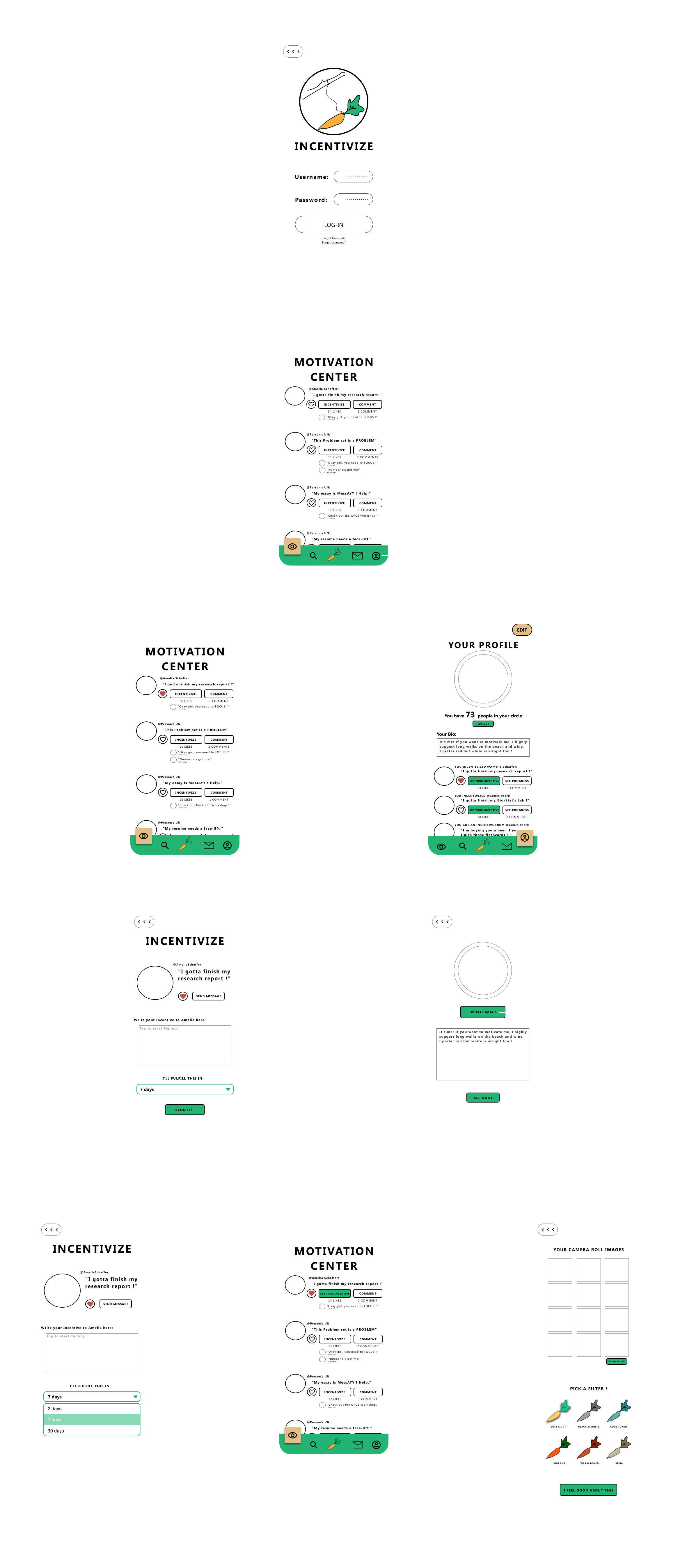
This was an exciting project in understanding what motivates people while also interviewing people about what a fun, engaging UI looks like. My inspiration was facebook and instagram in terms of UI patterns and elements involved in the design. The carrot logo was inspired by the old "carrot in front of the horse" idiom and I think it's a cute cheeky logo that people ultimately understood and liked.
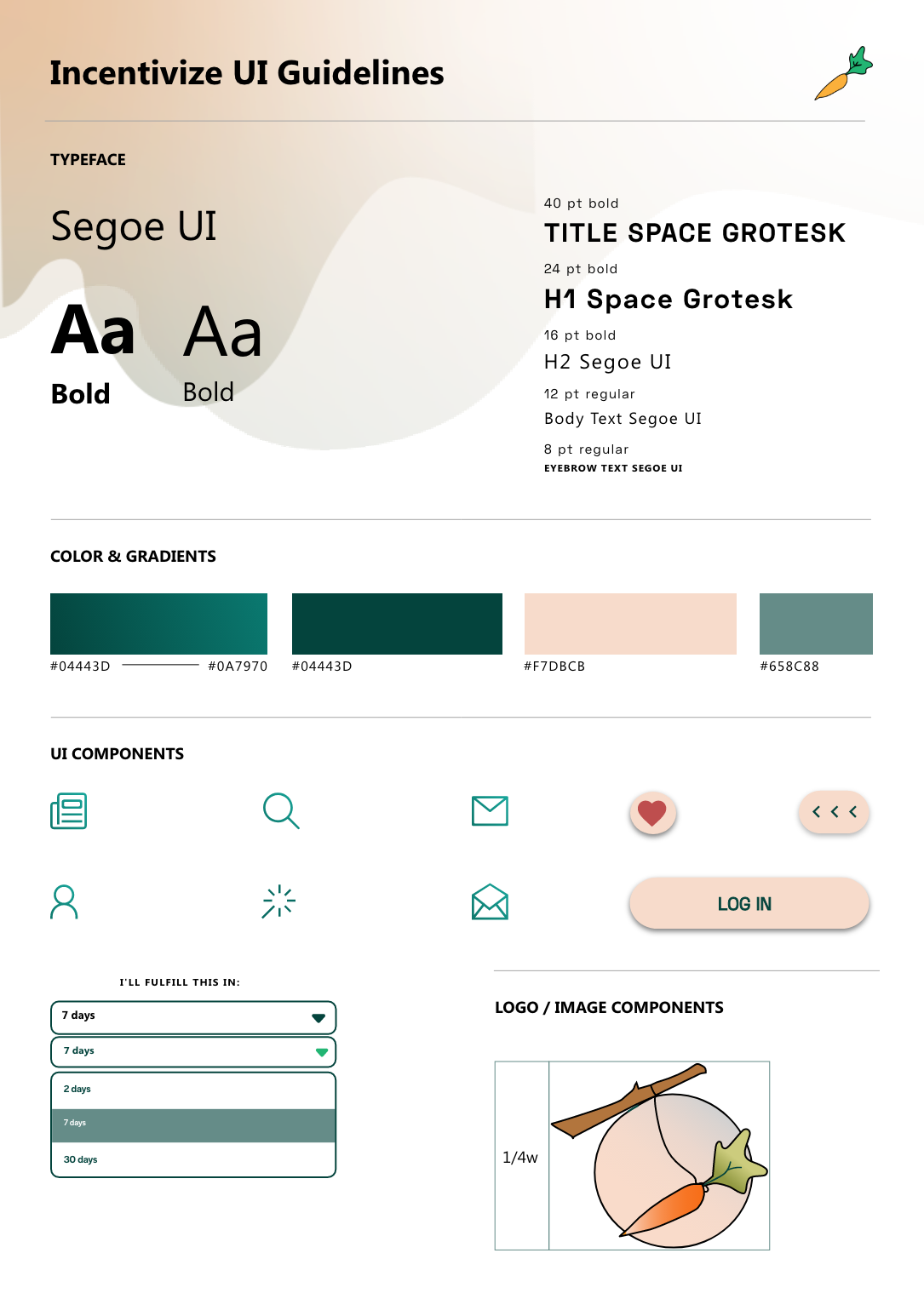
I set out to embed motivation and incentivization into my product as it is the backbone of the app. I knew that I could do this by challenging the idea that motivation is something that’s self-directed. I wanted to promote group based and community driven motivation so that there could be a balance between work and play for students, but I can also see this transferring to work environments and sports teams/fitness clubs as well.
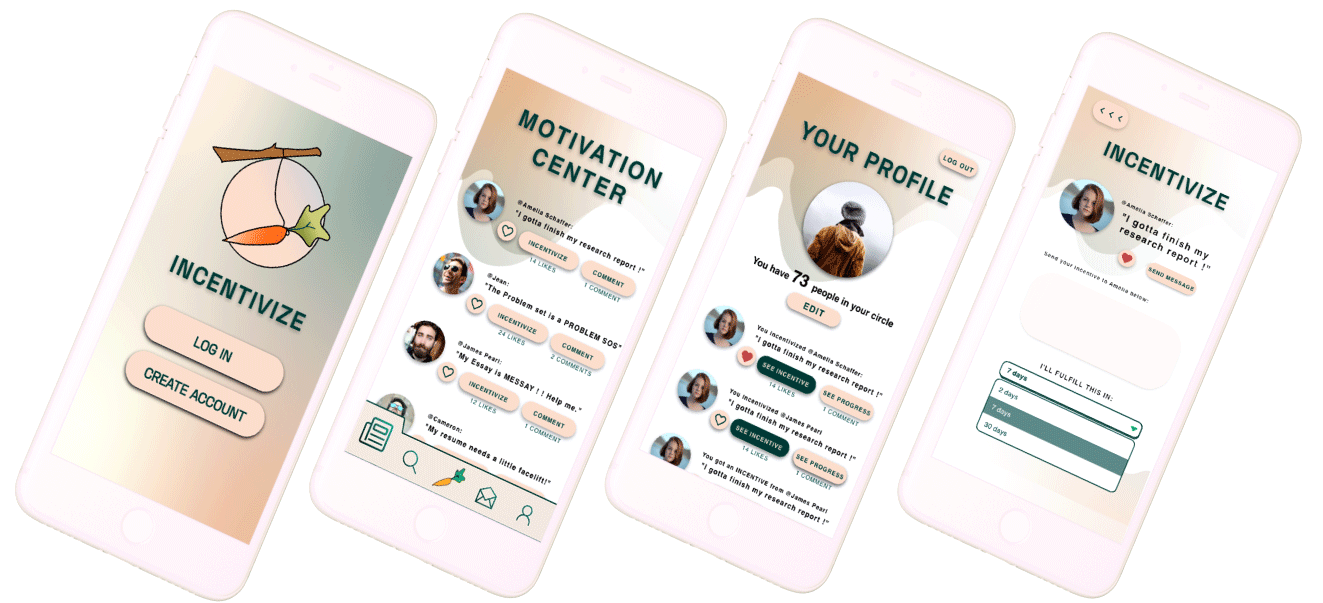
Imagine a world where finishing a problem set for a programming course would end in a beer purchased by a friend. It’s a win-win scenario! Your friend gets some quality time off from their work and you get a beer at the end of a long day of debugging code. The circle of productivity can continue too, maybe the next round is on you after your friend finishes studying for their statistics exam the following week! Incentivize isn’t meant to change the world, but it will aim to make living in a connected world as fun and as motivating as possible.
What I learned:
I wanted to embed motivation and incentivization as it is the backbone of the app and a main aspect of its problem statement. I also wanted to challenge the idea that motivation is something that’s self-driven. I wanted to promote group based and community driven motivation so that there can be a balance between work and play for students.
I think that sketching was incredibly helpful in getting me to where I wanted to be. It was very low stakes and I was able to iterate fast without wasting important resources.